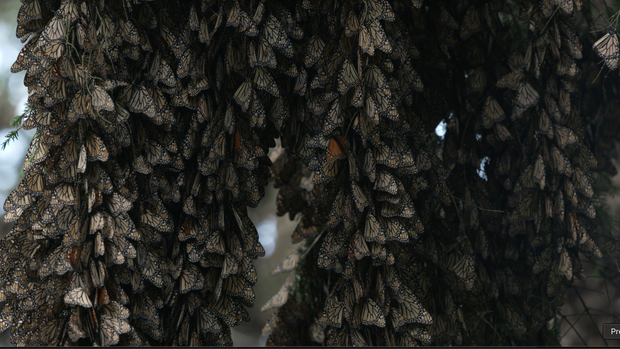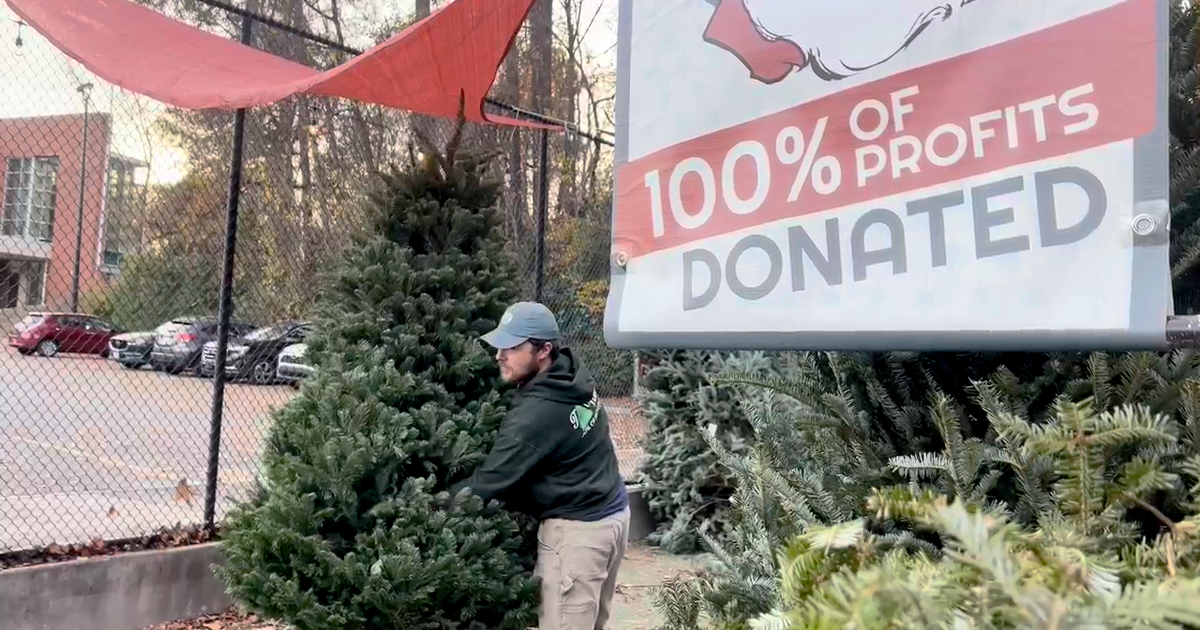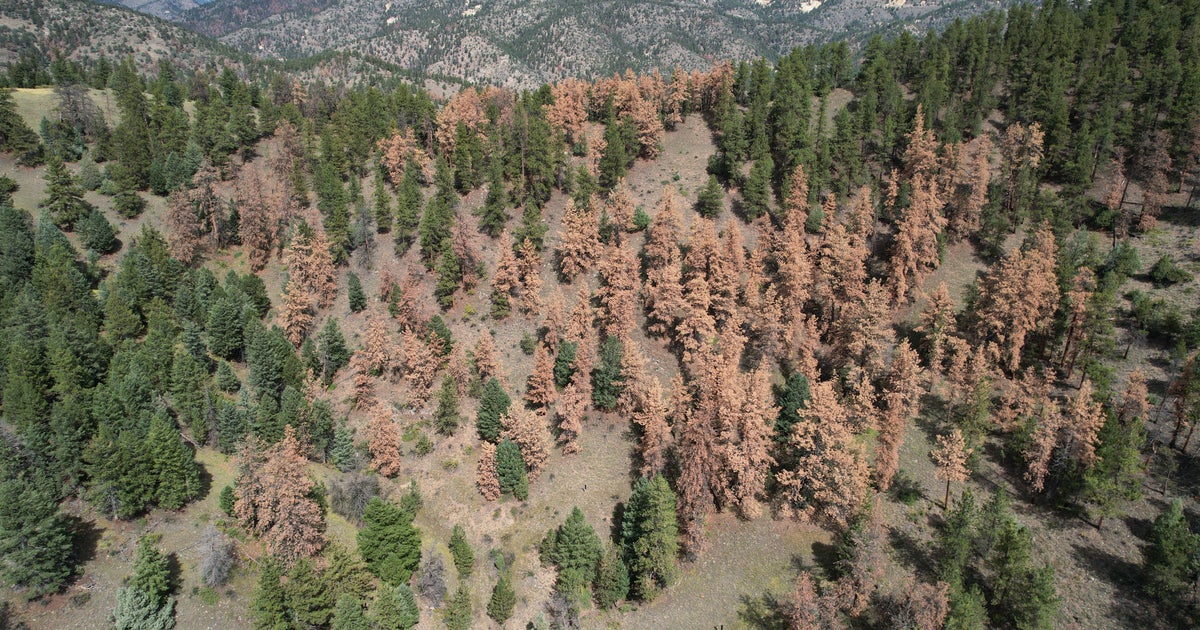Monarch butterflies travel thousands of miles to Mexico. An inside look into the mystery migration.
After flying some 3,000 miles from the northern U.S. and Canada to a remote forest in Central Mexico for the winter, tens of millions of monarch butterflies are making their way back north.
These are no ordinary monarchs. While most monarchs live about a month, these monarchs, a "super generation," can live up to nine times longer. It's believed monarch super generations have been making this epic migratory journey for thousands of years, but it's still something of a mystery how this super generation knows where to go.
"That's one of the most magical things that could happen in the natural world," said Jorge Rickards, director of the nonprofit World Wildlife Fund in Mexico.
Monarchs in Mexico
Starting in late October, monarchs come to remote mountains in Michoacan, central Mexico. They roost in patches of fir and pine trees up to 11,000 feet up. This year, some 66 million monarchs spent their winter in the Mexican forest, but it can be hard to see them at first.
Their orange wings are closed, so the clusters of butterflies look like clumps of dead leaves. There are so many of them that the tree branches sag.
"Imagine the lightness of a butterfly. And there are so many of them here that they actually bend the trees," Rickards said.
The monarchs are in a kind of hibernation. On the way to Mexico, they fatten up on nectar, which helps them survive and rest through the long winter months. The climate on the mountain is ideal. The canopy of trees protects the butterflies from storms, and though the air is cool, it's relatively humid, so they stay hydrated.
Rickards says the butterflies are sensitive to sound and carbon dioxide, so visitors must whisper and talk as little as possible.
Monarchs also litter the forest floor; they're not dead, they've just fallen from trees during the night, and their muscles are too cold for them to fly.
"They are very, very vulnerable when they're on the floor," Rickards said. "And the birds know that. And the mice know that."
Once warmed by the sun, they can open their wings and fly. As the day warms up, the sky is filled with flashes of orange as the butterflies take flight. There are so many flying around that visitors can hear the sound of their wings.
Court Whelan has been taking tour groups to the area and photographing monarchs for more than 20 years.
"It's like almost an optical illusion because everything is beating at this weird frequency," he said. "It's like the whole world is kind of pulsing."
Mysterious migration
It's still something of a mystery how these monarchs manage to get to Mexico. Most only live about a month, spending their short lives eating and mating, and females lay eggs.
Monarchs born west of the Rockies stay there and migrate shorter distances. It's the super generation, born in Canada and east of the Rockies in the northern United States, that flies to Mexico. With winter coming, the super generation butterflies sense the shorter days and changing temperatures and suppress a key reproductive hormone, a process called diapause, which helps them conserve their energy and live up to nine months.
The journey to Mexico can take three months or longer. To help them find their way, monarchs have circadian clocks in their antennae and navigate using internal compasses that respond to the position of the sun and the Earth's magnetic field.
Rickards said it's a big mystery why they come to the remote mountains of Mexico and have done so for thousands of years.
"Maybe it's a prehistoric route. Maybe it was determined by geographical conditions in terms of topography. Maybe it had to do with climate," he said.
Monarch butterflies at risk
Monarchs were discovered in central Mexico's mountains in 1975 and the Mexican government declared the area a federal reserve 11 years later. But for decades, illegal logging threatened the butterfly's roosting spots, which once covered as much as 45 acres. It's now down to four and a half.
The population of monarch butterflies in Mexico has declined 70% in the last 30 years, according to World Wildlife Fund.
The nonprofit conservation organization has spent years trying to combat the destruction of the monarchs' habitats by assessing the health of the forest, measuring the size of butterfly colonies and planting trees. The nonprofit also works with local communities and indigenous groups to protect the land and help them profit from tourism.
There are also people working to help the monarchs on their migration home.
After about four months in Mexico, the butterflies, nearing the end of their long life cycle, are finally ready to mate and migrate north to lay their eggs. They'll die before they can make it back to where they were born, and their offspring might not live long enough to get there either, but future generations will — and there's an army of people trying to help them.
In Kansas, volunteers catch and tag monarchs so scientists can track their migration. They're recruited by Chip Taylor, an 87-year-old ecologist who's been fascinated by monarchs since he was a child.
Taylor founded a nonprofit called Monarch Watch at the University of Kansas 30 years ago, and so far it's helped tag more than 2 million monarchs.
"This is a rough butterfly and it has to go thousands of miles," he said. "It's a pretty tough butterfly."
But that toughness is being tested. Monarchs returning to the U.S. need milkweed plants to lay their eggs on; it's the only source of food their newly born caterpillars will eat. But milkweed is now hard to find. It's been virtually eradicated on agricultural land because of genetically modified corn and soybean crops that allow for mass spraying of herbicides.
Monarch Watch encourages people to plant milkweed in their gardens and on public land, creating what it calls "Monarch Waystations;" 50,000 waystations have been planted so far.
It's estimated fewer than 20% of the monarchs that head out on this miraculous migration actually make it to the mountains of Michoacan. Scientists say worsening storms and rising temperatures kill off many, though this past year the number of monarchs that survived the trip nearly doubled, according to the World Wildlife Fund.
It was particularly welcome news in Mexico, where the butterflies' arrival in late October coincides with a deeply spiritual celebration, the Day of the Dead. That's when many in Mexico believe the souls of family and friends who've died return to visit their loved ones, and so they believe that's why the butterflies are returning as well.
"Maybe we are actually, you are reviving — you're helping someone's ancestor fly back," Rickards said. "Yes, indeed. So it's very magical."









